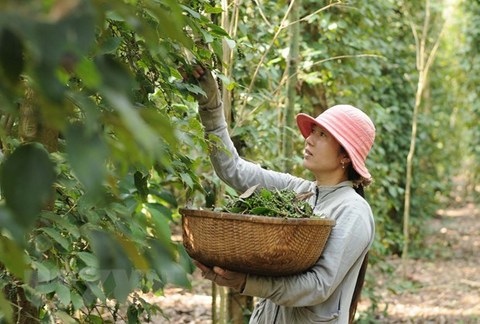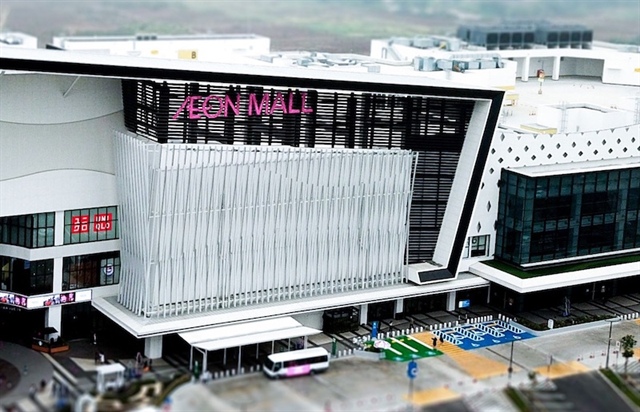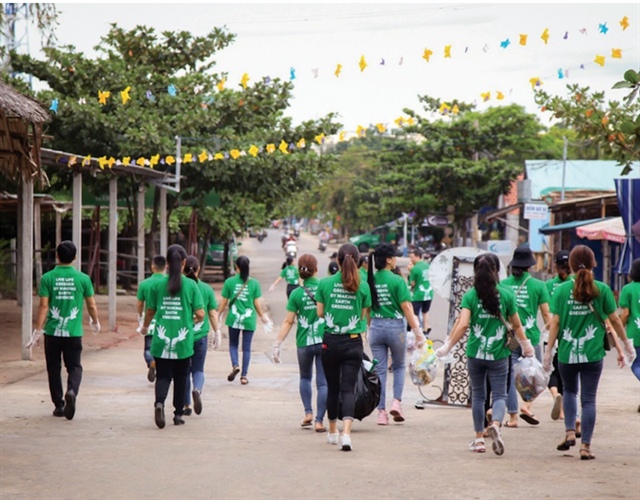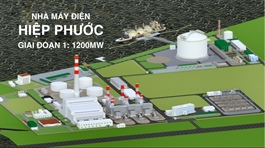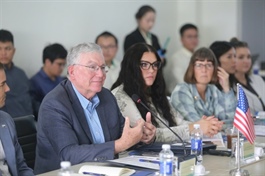Regional links expected to promote Việt Nam’s agricultural exports
Regional links expected to promote Việt Nam’s agricultural exports
Developing green value chains therefore serves a dual purpose: optimising economic benefits and improving rural livelihoods, while balancing economic, environmental and social development.

A biomass corn growing model in Quảng Ngãi Province. — VNA/VNS Photo Hải Âu |
The promotion of regional links is emerging as a key solution for Việt Nam’s agricultural sector to transition toward a green, sustainable development model and achieve the country's ambitious export target of US$70 billion this year.
Experts made these remarks at a workshop on regional connections promoting green value chains in Việt Nam’s agriculture sector organised by the Agriculture and Environment Magazine on November 19.
According to the Ministry of Agriculture and Environment, as global markets tighten environmental and traceability standards, Việt Nam must adapt to increase added value, expand market access, and enhance the global position of its agricultural products.
Speaking at the workshop, Deputy Minister Phùng Đức Tiến confirmed that the 2025 export target is feasible if the current growth momentum continues.
In October alone, the agricultural sector recorded a trade surplus of $17.6 billion, or nearly 90 per cent of the annual target.
This achievement stems from improved product quality, investment in deep processing, market expansion, and the application of green production standards.
Tiến stressed that green value chains are the core driver of safe production, emissions reduction, environmental protection, and increased added value.
Models emphasising circular and organic agriculture — efficiently using land, water and biodiversity — are being expanded nationwide to meet strict international standards.
Việt Nam still relies heavily on exporting raw agricultural products, a practice vulnerable to price volatility and weakened competitiveness, the deputy minister said, warning that without deeper processing and stronger links, the country’s agricultural exports will remain at a disadvantage.
Developing green value chains therefore serves a dual purpose: optimising economic benefits and improving rural livelihoods, while balancing economic, environmental and social development.
As global emphasis on sustainability increases, Việt Nam must accelerate its transition to meet market expectations.
Under the country’s green transition commitments, the ministry will prioritise regional collaboration strategies and promote circular cooperation models involving farmers, enterprises, scientists and local authorities.
Key solutions include strengthening traceability, ensuring food safety, certifying products that meet international standards, developing local specialty products, and applying sustainable and green agricultural models.
Workshop participants also heard that green value chains require collaboration beyond the agricultural sector, engaging multiple industries, non-governmental organisations, businesses, and local authorities.
Effective coordination will transform the agricultural production and consumption ecosystem and elevate Việt Nam’s position in global markets.
Digital transformation also brings significant opportunities. A database system expected to be completed by the end of the year will connect data throughout the entire value chain from production to consumption, creating a modern, transparent management platform.
The agricultural sector is also working to integrate data with the VNeID identification system, enhancing traceability, and meeting increasing international requirements.
Standardising quality standards and building regional brands are further expected to raise product value and strengthen consumer confidence.
Several experts argued that global markets are demanding rapid innovation, requiring Việt Nam to transition rapidly to a green, low-carbon, traceable agricultural model.
Director of the Institute of Agricultural Strategy and Policy Trần Công Thắng said standards now extend beyond production techniques to include circular, organic and emissions-reducing production ecosystems.
To reach $80–100 billion in agricultural exports in the next few years, Việt Nam must keep pace with these global trends.
He added that green value chains cannot be built without a skilled workforce of farmers capable of applying new technologies and adapting to climate and disease risks.
Despite recent progress, significant challenges remain. Unsustainable connections already exist in many regions, production, processing and consumption chains are not fully integrated, administrative procedures remain complicated, there is a notable gap in effectiveness between localities, and climate change is having an increasing effect on production.
Associate Professor Dr Phạm Thị Thanh Nga, director of the Institute of Meteorology, Hydrology and Climate Change, said that climate and environmental issues do not respect administrative boundaries. Strengthening regional cooperation is essential to manage water resources, reduce disaster risks and protect livelihoods.
At the workshop, experts agreed that enterprises play the leading role in organising production and investing in deep processing, building brands, and guiding market orientation.
Meanwhile, co-operatives play a bridging role, helping to connect farmers, standardise production processes, and ensure quality. Farmers also need to shift from small-scale thinking to professional production, meeting increasingly strict quality requirements.
Post-harvest technology and deep processing remain major bottlenecks. Investments in preservation, modern processing equipment and digitalised quality control are essential to reduce losses and meet high-end market standards.
Businesses have said that deep processing significantly boosts product value and improves farmer incomes.
From July 1, the implementation of the two-tier urban government model is expected to lead to major changes in regional planning.
Localities will need to share data, unify planning and coordinate management of agricultural production spaces, especially in key agricultural regions.
These changes will help form concentrated raw material areas, reduce logistics costs, promote deep processing, reduce post-harvest losses, increase transparency, and meet stringent import market requirements.
Editor-in-Chief of Agriculture and Environment Magazine Đào Xuân Hùng said that green value chains not only reduce emissions and protect the environment, but also enhance Việt Nam’s national agricultural brand.
Regional connections will remain a powerful engine for sustainable agricultural development amid global trade fluctuations and increasingly strict technical barriers.
After six years of implementing Decree 98, Việt Nam has formed more than 3,500 collaboration models attracting 300,000 farming households and nearly 2,000 co-operatives with mobilised capital of over VNĐ20 trillion.
Yet many chains remain unstable, with unclosed processes and administrative barriers.
Hùng said that strengthening regional links and developing green value chains will be crucial for optimising logistics, expanding markets, increasing product value, and achieving Việt Nam’s net-zero emissions goals, requiring tight coordination among the State, businesses, scientists, co-operatives and farmers.
- 08:24 20/11/2025


